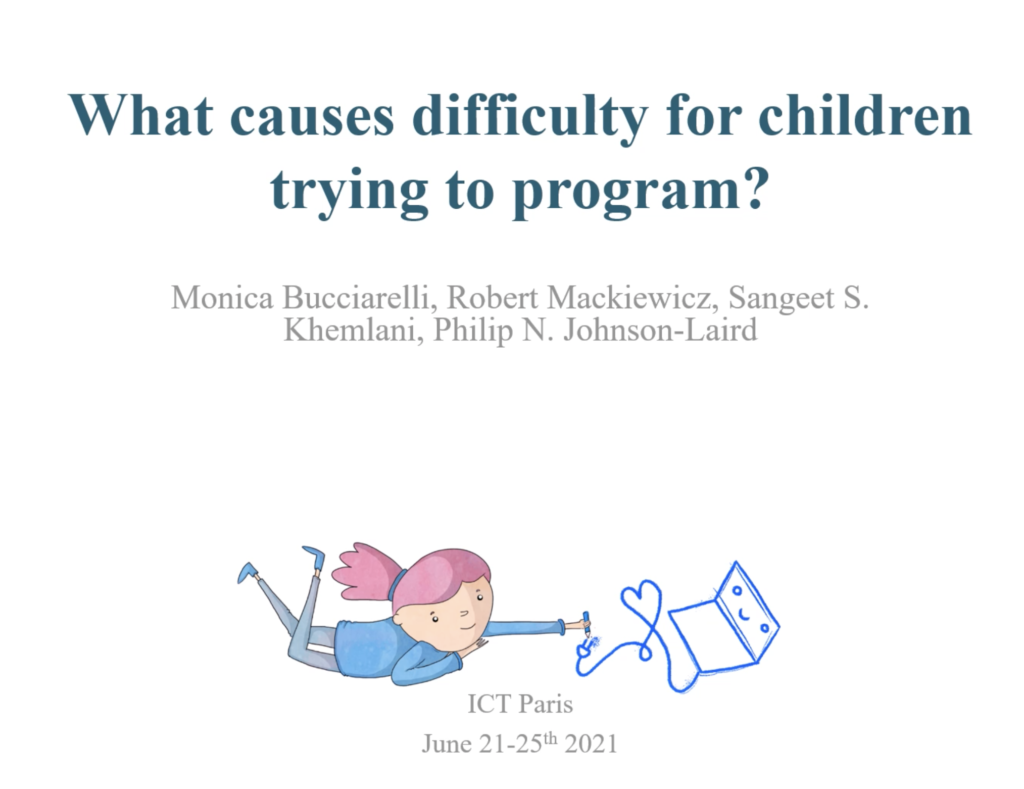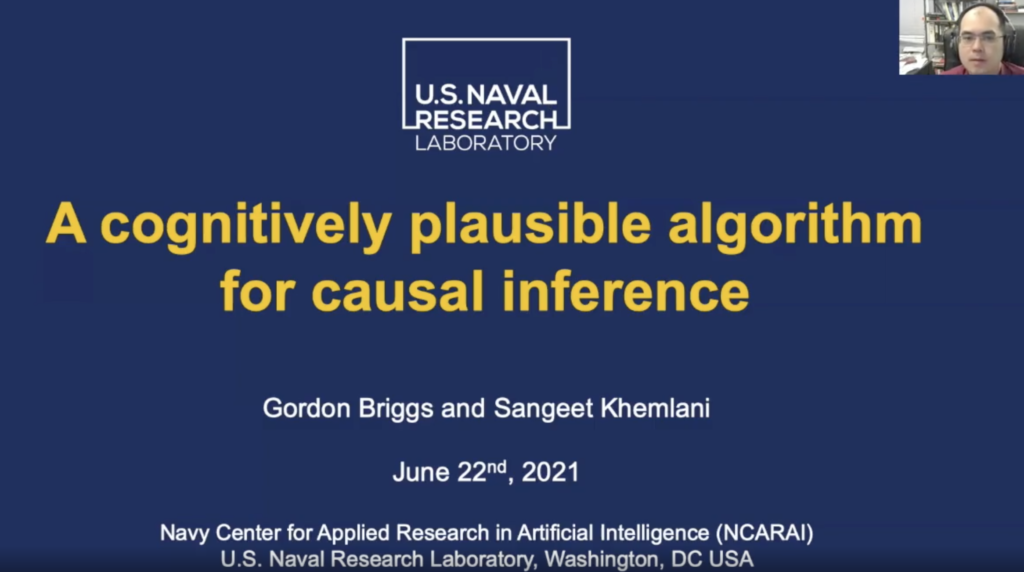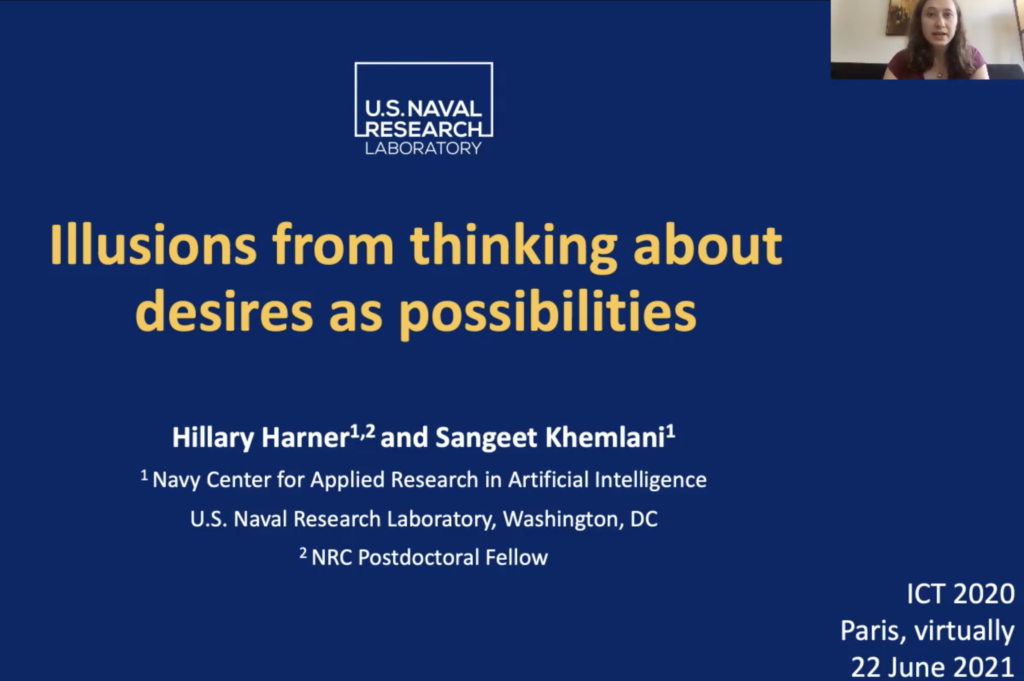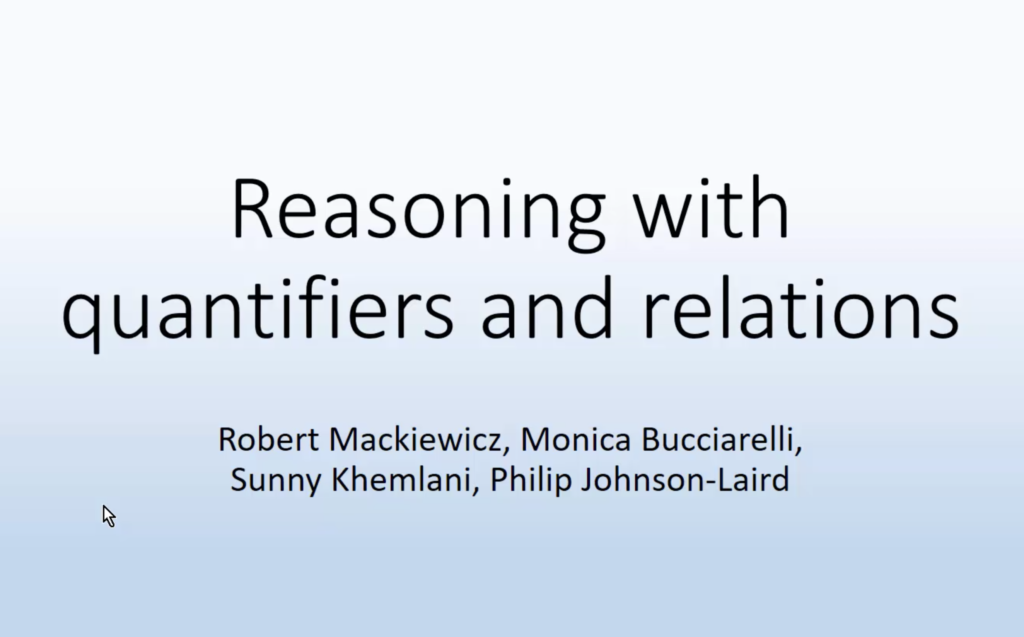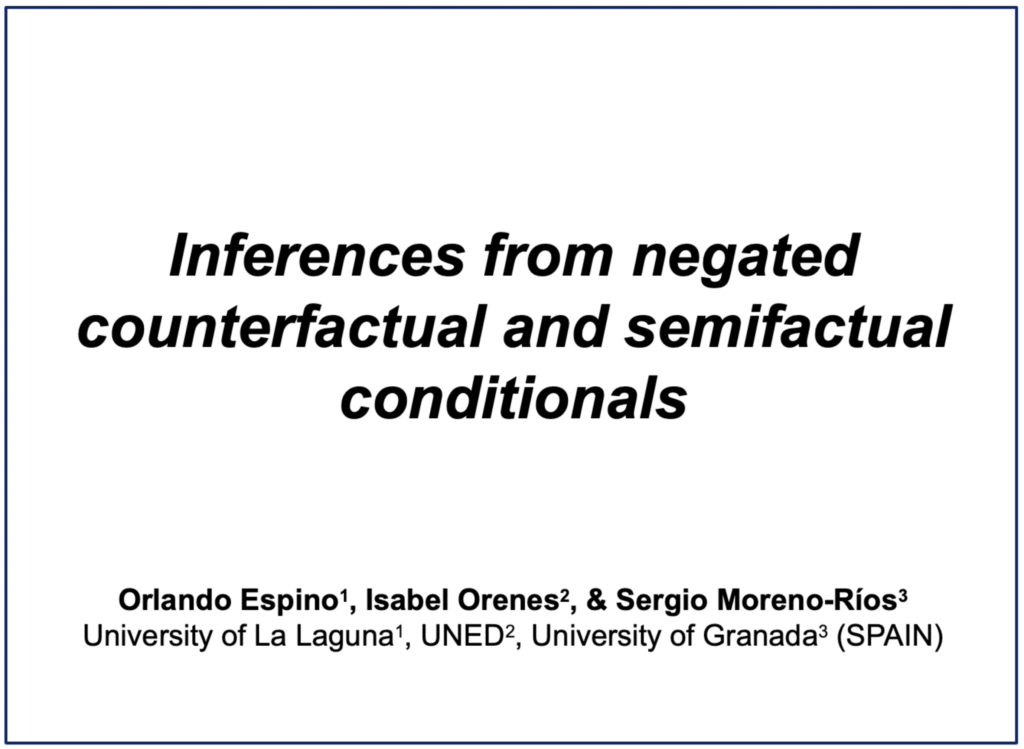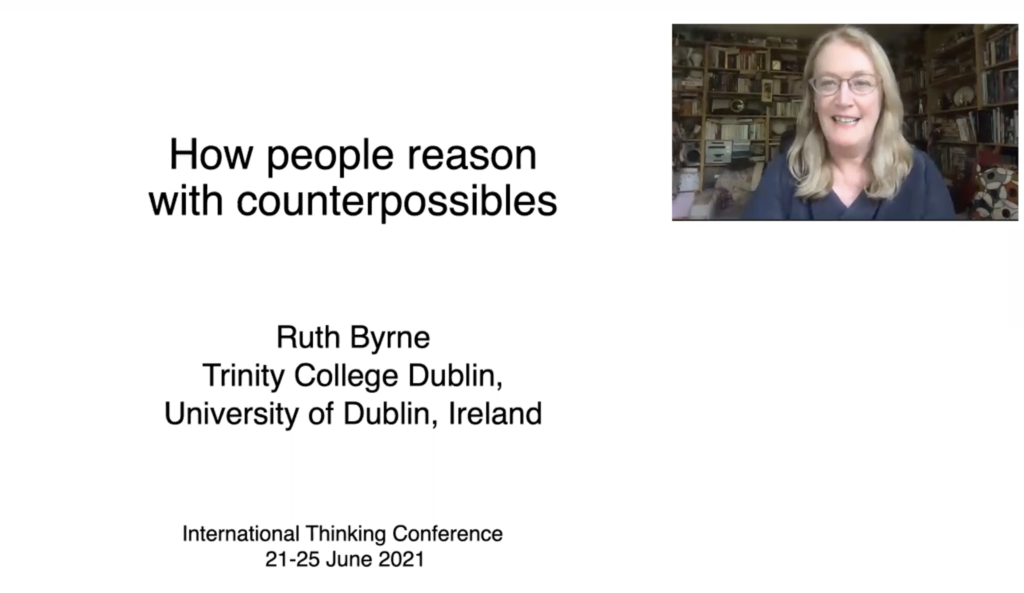The 2021 International Conference on Thinking will showcase two symposia titled Mental Models in Thinking and Reasoning I and II. Scientists participating in the symposia highlight new advances on the model theory, as well as empirical and computational investigations to test the theory. Here we include an archive of the individual presentations.
Cognitive theories are often developed for explaining aggregated-level statistic effects attributed to a study population. While useful to discern general effects of human cognition, the underlying aggregation may limit the possibility to make predictions for an individual reasoner. In this talk we will focus on implementations of major cognitive theories of deductive reasoning and discuss how cognitive theories need to be adapted and implemented to predict an individual reasoner.
Monica Bucciarelli
“Difficulties in children’s creation of informal algorithms”
Ten-year olds naive in computer programming are able to formulate informal algorithms to solve re-arrangement problems. Our theory postulates that they rely on a kinematic mental simulation of the series of steps that transforms the input into the output, and its translation into a verbal description. The present investigation explored children’s ability to formulate recursive algorithms along with determinants of algorithms’ difficulty through the analysis of children’s errors. Ten year olds encountered pairs of problems in which the same re-arrangement was required first for a six-cars train then for an eight-cars train. The results revealed a correlation between children’s use of loops and a fine-grained measure of accuracy in the algorithms for trains of both lengths. Also, an analysis of errors highlighted sources of difficulty in children’s abduction of algorithms. The results have implications for reasoning and computer programming.
Gordon Briggs
“A cognitively plausible algorithm for causal inference”
causes seriation, and that seriation prevents methylation. The vast majority of reasoners infer that habituation prevents methylation. Cognitive scientists disagree on the mechanisms that underlie causal reasoning, but many argue that people can mentally simulate causal interactions. We describe a novel algorithm that makes domain-general causal inferences. The algorithm constructs small-scale iconic simulations of causal relations, and so it implements the “model” theory of causal reasoning (Goldvarg & Johnson- Laird, 2001; Johnson-Laird & Khemlani, 2017). It distinguishes between three different causal relations: causes, enabling conditions, and preventions. And, it can draw inferences about both orthodox relations (habituation prevents methylation) and omissive causes (the failure to habituate prevents methylation). To test the algorithm, we subjected participants to a large battery of causal reasoning problems and compared their performance to what the algorithm predicted. We found a close match between human causal reasoning and the patterns predicted by the algorithm.
Hillary Harner
“Illusions from thinking about desires as possibilities”
Despite the central role desire plays in our everyday lives, there exist no cognitive models about desire. We present a model theory representation of desire. Namely, we show that this theory models desires as future possibilities, which an agent may have no intention to act on or may not even have an ability to act on. We support the claim that desires are possibilities by exploring people’s judgments of possibilities in illusory contexts (cf. Khemlani and Johnson-Laird, 2017). In some scenarios that describe competing desires, people should erroneously assert that certain scenarios are possible when they are not, and vice versa. The model theory explains this error in reasoning according to how people represent possibilities: they represent what is necessary to make a statement true, and do not model extraneous information, such as what makes a statement false. We report on experimental investigations of this phenomenon.
Robert Mackiewicz
“Quantifiers and asymmetric relations: Investigating possibilities in young and older adults”
The study investigates how young (students) and older adults (over 60) understand quantifiers with asymmetric relations such as “all A cars arrived earlier than some of the B cars”. The theory of mental models (Khemlani & Johnson-Laird, 2012) predicts that individuals envisage possibilities compatible with such assertions. But older people typically search through a smaller number of possibilities but spent more time on investigating each of them (Mata, Wilkie, & Chienskowski, 2009). This leads to a hypothesis that older people should be aware of a smaller number of possibilities compatible with assertions containing relations and quantifiers. This prediction was tested with the use of a novel task: an online game in which the participants were re-arranging the train cars along the rails: the main track and the siding. The participants were free to move the cars along the rails and their task was to re-arrange the cars (with the help of a computer mouse) that their final order on the right track was compatible with different assertions. As it turned out both young and older adults could do it without mistakes but younger adults were faster and formed more different final orders than older adults. The results show that older adults do not differ in asserting whether a possibility is compatible with an assertion or not but they mainly concentrate on less complex possibilities more cars with same labels together.
Orlando Espino, Isabel Orenes, and Sergio Moreno-Ríos
“Inferences from negated counterfactual and semifactual conditionals”
The goal of this research was to study how people understand and reason with negated counterfactuals (such as ‘Antonio denied/said that it is false that if Messi had played, then Barcelona would have won’) and negated semifactuals (such as ‘Antonio denied that although Messi had played, Barcelona would have won’). Three experiments examined the full set of counterfactuals or semifactuals and conjunctive conclusions that follows from negated counterfactuals or semifactuals. The results show that when people understand a negated counterfactual, they endorse the counterfactual conclusion ‘if Messi had played, then Barcelona would not have won’ while they accept the conjunctive conclusion ‘Messi did not play, and Barcelona did not win.’ On the other hand, when they understand a negated semifactual, they endorse the semifactual conclusion ‘although Messi had played, Barcelona would not have won’ but also ‘although Messi had not play, Barcelona would have won’, and they accept the conjunctive conclusions ‘Messi did not play and Barcelona did not win’ and ‘Messi did not play and Barcelona won.’ We discuss the implications of the results for the model theory, the dual meaning of conditionals and the small scope negation.
Philipp Koralus, Sean Moss, Vincent Wang
“Toward a content-based theory of reasoning and general intelligence”
Mental model theory was arguably the first content-based theory of reasoning. A content-based theory holds that the mental representations underwriting our reasoning capacity have the structure of their representational contents. It is challenging to maintain a fully content-based theory if we wish to be able to express everything that can be expressed using quantifiers, predicates, and relations. I present recent results that show that this problem of expressive power can be solved without weakening our commitment to a content-based theory. The erotetic theory of reasoning holds that the relationship between issues and answers is central to our thinking, both when we commit fallacies and when we reason correctly. We seek to answer issues as directly as possible, which can lead us astray. However, if we raise enough questions, to the point of reaching erotetic equilibrium, fallacies are eliminated. I present the theorem that under erotetic equilibrium, our reasoning capacity as described by the erotetic theory subsumes first-order predicate calculus, even if it is too computationally costly to guarantee this in practice. Using a variety of thought experiments, I then argue that a content-based theory of our capacity to reason seems best suited for developing systems that are congruent with intuitive notions of general intelligence.
Ruth M.J. Byrne
“How people reason with counterpossibles”
I discuss the results of three experiments designed to examine how people reason with counterpossibles (counterfactual conditionals with impossible antecedents). The experiments examine a range of counterpossibles, including (a) those that seem non-vacuously true such as “if lakes were made of bleach people would not swim in them” (which appears to be true whereas “if lakes were made of bleach people would swim in them” appears to be false), (b) counterpossibles that seem vacuously true, such as “If lobsters had been birds, they would have made nests” (which appears to be true but so does “If lobsters had been birds, they would not have made nests”), and (c) ones that seem false, such as “If houses had been made of spaghetti, their engines would have been noisy”. Participants made judgments about whether such counterpossibles were true or false (Experiments 1 and 2), and conditional inferences of modus ponens and tollens, denial of the antecedent and affirmation of the consequent (Experiment 3). The experiments show that participants distinguish between counterpossibles that are true and those that are false, and they show a tendency to make more inferences such as modus tollens and denial of the antecedent (as they do for counterfactuals) only from counterpossibles that are true, not from those that are false. The implications of the results are discussed for the debate about whether counterpossibles appear to be non-vacuously true merely as a result of cognitive heuristics.

